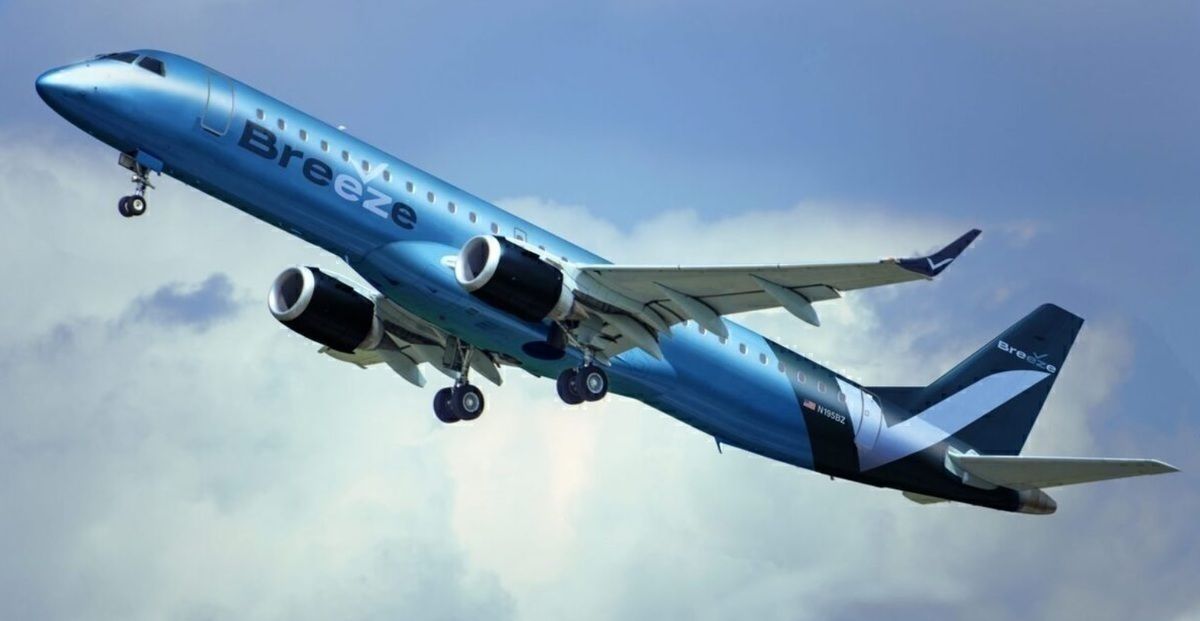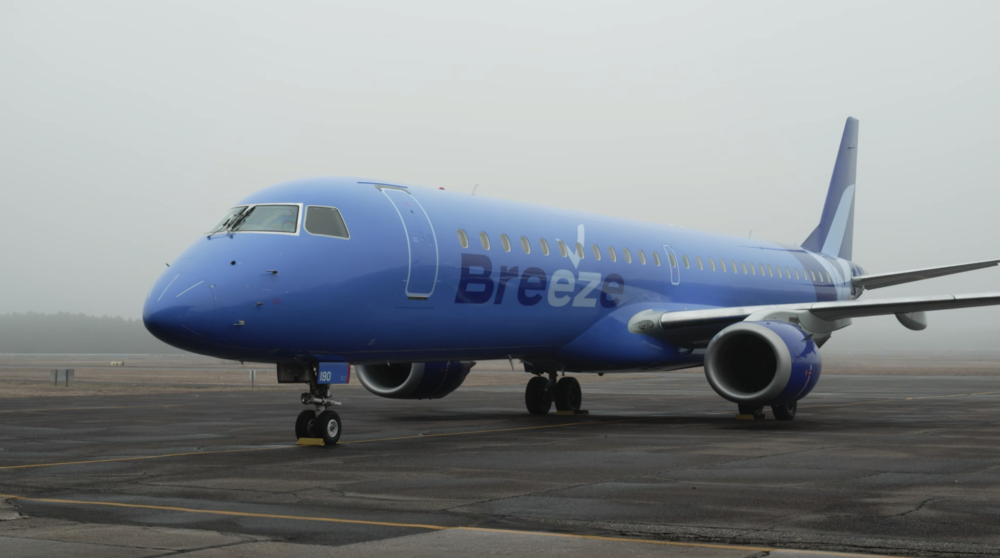The day has arrived: Breeze has put its first routes on sale. First up is Charleston to Tampa, which takes off on May 27th – in just six days. Breeze has revealed 39 routes so far, of which only eight will have head-to-head competition. This clearly demonstrates how Breeze seeks out unserved opportunities, but do the routes make sense?
On May 27th, MX4 – in a nod to when the airline was named Moxy – will depart Charleston at 19:50 and arrive in Tampa at 21:10. Simple Flying reported that this was likely to be its launch route.
Breeze's 39 routes saw 1.1 million people fly via a hub in 2019, booking data obtained via OAG Traffic Analyzer shows, for an average of about 29,000 indirect passengers. The 39 routes can be summarized as follows:
- Involving 16 airports
- Eight routes (21%) will have head-to-head competition (based on this May to December)
- An average length of 604 miles
- 144 weekly departures in all
- 33 of the 39 routes are four-weekly
- Two routes are once-weekly
- Two routes are twice-weekly
- Two routes are three-weekly
- Lots of connecting the dots; multiple routes from most airports, so gaining more economies, including marketing
- Almost all routes will operate on Thursdays, Fridays, Sundays, or Mondays; very little flying on the rest of the days
|
From |
To |
Start date |
Weekly departures (first week) |
Distance (Miles) |
Indirect round-trip passengers |
|---|
Little direct competition
Breeze will have no head-to-head competition on 31 of its 39 routes, illustrating how it will target unserved markets, whether they have been served by other airlines in the past or not. Of the eight routes with direct competition, they're split among various carriers: Allegiant; JetBlue; Spirit; Silver; Southwest; United. Each will have very little exposure.
Stay informed: Sign up for our daily and weekly aviation news digests.
Decent-sized markets
Almost all markets are obviously very leisure-orientated, and the average market size of ~29,000 indirect passengers is decently sized. Eight had more than 40,000 passengers, led by Tampa-Richmond with 57,000. In Europe, Wizz Air and Ryanair often launch new routes with fewer than 5,000 existing passengers and then strongly stimulate demand.
Some readers may say that the average of 29,000 equates to only passengers daily each way (PDEW) of 40. But Breeze will stimulate leisure demand from non-stop service, what seems to be a good product, and reasonably low fares. Moreover, its average frequency is just four-weekly using jets with only 108-118 seats.
Fairly short flights on popular days
The average route length of 604 miles nicely means that the average will be within the one-to-two-hour sweet spot. While Breeze won't be a low-cost carrier as we know them, this is still important. Normally, shorter flights, coupled with quick turns, mean more sectors per day, increasing the number of passengers carried and revenue opportunities.
This goes hand-in-hand with the vast majority of Breeze's flying being on important days for demand and fares, meaning it needs to make money on those days. Indeed, Breeze mentioned long ago that it'd minimize flying on less popular days, something that Allegiant is known for doing. Breeze's second-hand Embraer 190/195s, with low ownership costs, will be crucial in this. They'll also combine low trip costs without many seats to fill.
Bottom line
Breeze’s initial route map and hub-busting strategy in demanded markets make sense. And with so many mid-sized US cities with decent numbers of existing leisure passengers – who are forced to fly through a hub, meaning more time and money and less convenience – it is highly likely that hundreds of routes will begin in time.
It’ll also be fairly easy to predict likely routes. New Orleans, for example, has dozens of unserved markets within 1,000 miles with 10,000+ passengers.
What are your thoughts on Breeze's routes and airports? Let us know in the comments.




